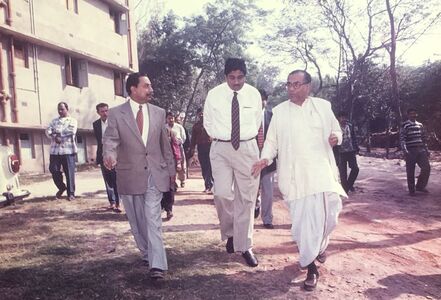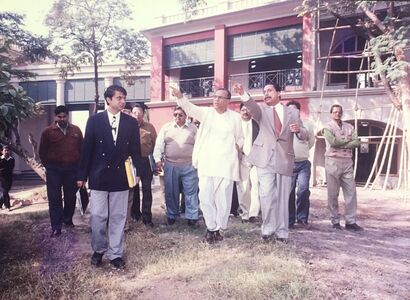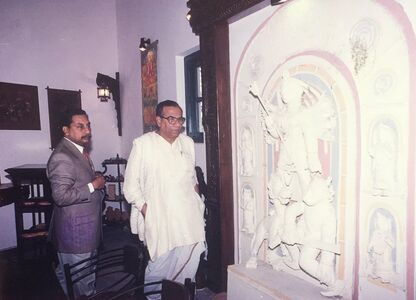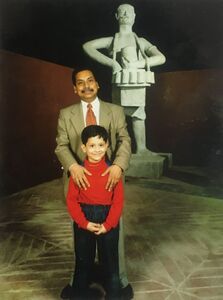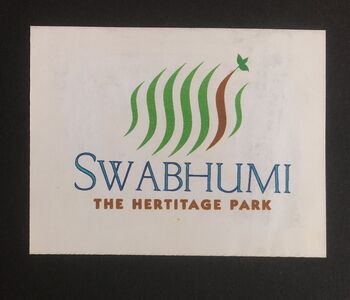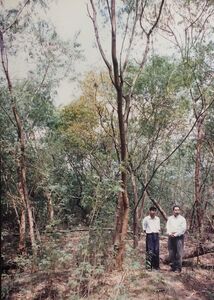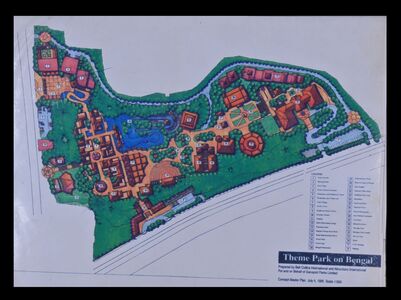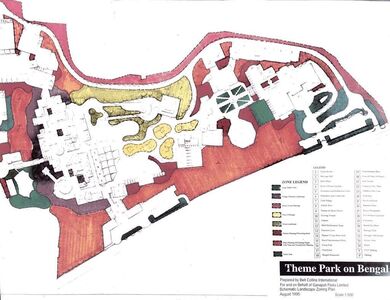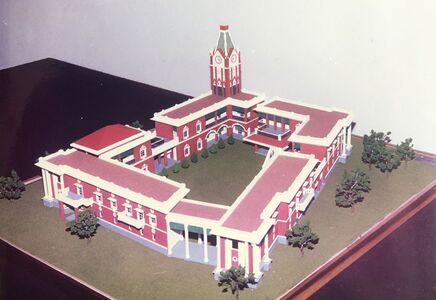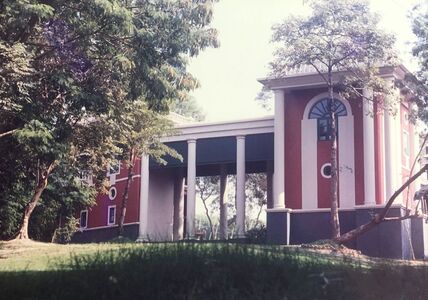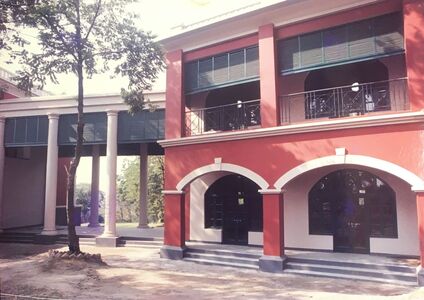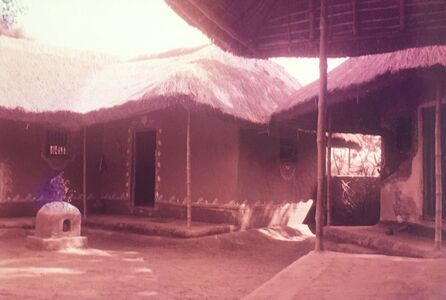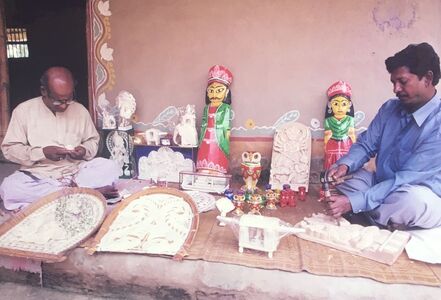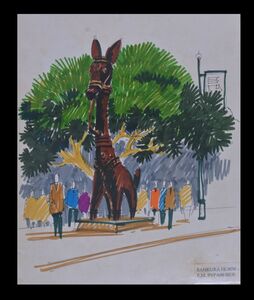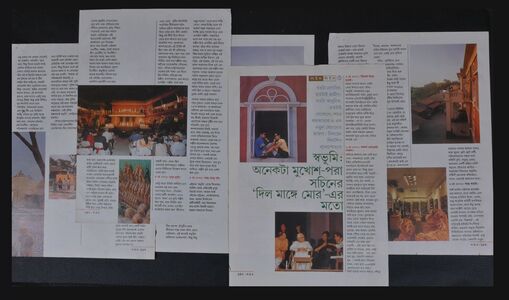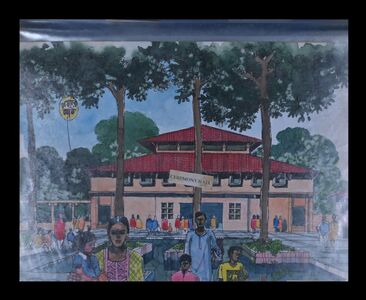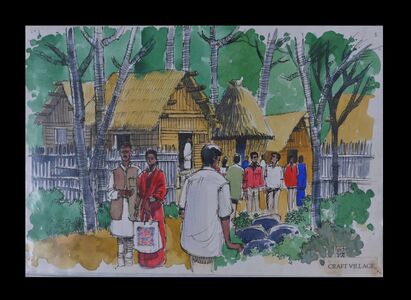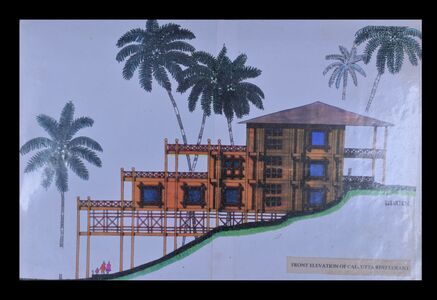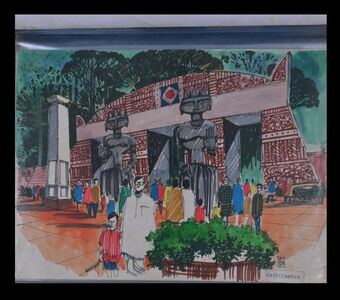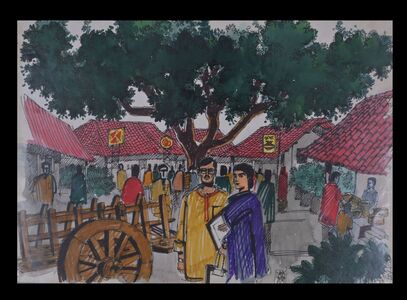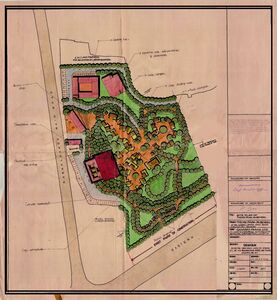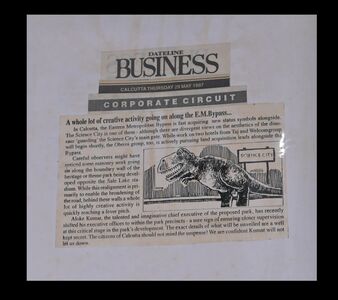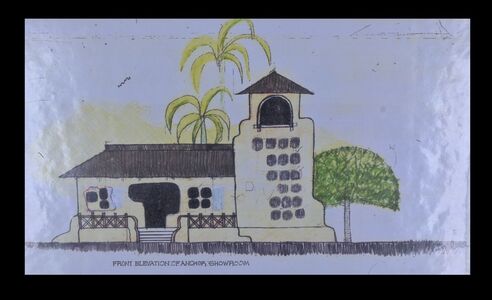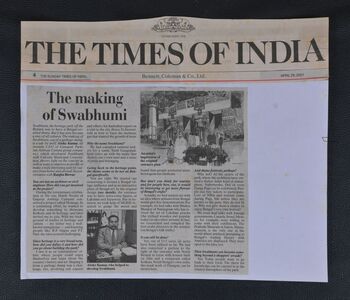I was working in the Anandabazar Group. For the last 15 years I have been with the group much entrenched. As part of Management had handled all publications in the group and was working for a tie-up of Business Standard with Financial Times, London.
It is at this juncture that I received an offer from Gujarat Ambuja Cement, more precisely from their Member of the Board, Harsh Neotia to join them as the Chief Executive to join them to create a Heritage Park.
To support the offer I was told that it is in collaboration with the Government of West Bengal, with whom they are partnering the project. I was not keen. I was settled in the Media Business, having earned some fame with the launch of The Telegraph with which I was involved from the beginning in Research and Design Then also with the Launch of Sananda; having handled the mother publication Anandabazar Patrika at a time Bartaman was launched and coordinating a major Special Issue on the Tercentenary of Calcutta.
I was also quite taken by the offer as I was neither an architect, a civil engineer, a landscape artist: all qualities which I felt were needed to create such a feat. However, Harsh Neotia went on telling me that they have faith in me as my father being an antiquarian, I come from a family dipped in History and Culture. He also emphasised that they need somebody who has handled projects from start to finish, a task which I had done a multiple times on the launch of different publications.
Moreover, it has a strong nomination from the Government of West Bengal. In the month of March I got a call from the Chief Minister of West Bengal, Jyoti Basu calling me over to Writers Building, the State Secretariat. He was straight and to the point. Harsh Neotia on behalf of Gujarat Ambuja has extended an offer which is in collaboration with the Government of West Bengal and if for some reason , I am hesitating there is a firm commitment from the Government to hand over a piece of land for the project and personally it will have his full backing.
I joined Gujarat Ambuja to create the first Heritage Park in India. Immediately after my joining in August 1994 the land at EM Bypass was handed over, then known as the Dump at Kadapara. This was the original Garbage Dump vat the end of Narkeldanga Road where the Garbage from Calcutta was brought in Goods Train and dumped. Over the years as the city grew, this shifted away slowly first to the location where Science City has come up and latter to Dhapa.
It was a Hillock, not natural created out of solid waste over an area of 13.5 Acres of Land. Natural vegetation grew over years, including large trees over a variegated undulated land mass. It was then occupied by bootleggers, miscreants, and prostitutes. There was no wall. A free for all land used for defecation from nearby bustee with many Satta Dens. Subhas Sarovar was on the opposite side with its own problem.
The Park was envisaged in Four Parts : The Entrance with Administration, The Urban, Rural and the Food Court. Each phase would depict a part of our History and Culture. Interactive and Sale. The first Overall Design was created by Allen Kerton from Belt Collins. Then it was fine tuned to our Indian, particularly Bengal culture and Heritage by Architect Partha Ranjan Das and Prabir Mitra.
It is at this stage that we hit the first block. The top soil of the wasteland had not settled and no construction can be made. This was solved by Partha Ranjan Das when he recommended to cut the top soil and remove it from the site. The second block was that since it was a garbage dump there was trapped methane gas which is dangerous for any construction as with built structure it can explode any day. It is at this stage that the progress halted as we retreated to find means to release the entrapped methane gas. We were at a loss when the light came from a rare source. Our soil expert, Shymal Kumar Mitra had a guest from the Australian University who gave us a simple solution: Get deep borings throughout the site and light the gas as it is release. The lighting of the gas will ensure that it exhausts all gas entrapped.
The construction started. The Entrance like a ‘Toron’, the heritage entry to many an old city. The Urban Area designed like Tagore’s Ancestral Home with Thakur Dalan. The rural, like a village. All these were designed by Partha Ranjan Das. The Food Court was designed by Prabir Mitra with the North, South, East, West construe with each area representing the food of that area. The architectural element was also taken from the region with an open central square. The Park was opened by the Chief Minister Buddhadeb Bhattacharjee in February 2001.


